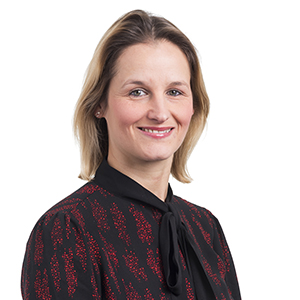
What do construction women want? Equity.
We're used to talking about gender equality in the workplace – but the focus should be on equity, as this year's International Women's Day theme suggests. So what is equity and how is it different to equality?
Equality is giving everyone the same thing regardless of their individual needs. Equity is about supporting people with the resources and opportunities they need to thrive in the workplace, bearing in mind that one person or group's needs are not always the same as another's.
Achieving equity may seem like a difficult task for businesses without a diverse workforce – how can you know what is needed without asking the people who need it? – but with diversity and awareness of it increasing in the construction sector, the small steps that have been taken already look set to become giant leaps.
So how do we continue to increase the number of women in construction through equity? We have listed some thoughts below and – while we acknowledge that some of these points may not apply solely to women, or be relevant to all women – we hope they will help businesses to think more widely about what their people need to feel safe, supported and valued at work.
PPE
Standard personal protective equipment (PPE) is generally made to fit a male body. Oversized hard hats, long trousers or ill-fitting gloves cannot properly protect women from the possible dangers of working on site, and they perpetuate the stereotypes that women do not belong on construction sites (a topic we have discussed previously). As more women join the industry, more companies are designing equipment with women in mind. The days of women rolling up trousers or wearing extra socks to make boots fit are numbered – but only if employers commit to buying the right equipment for them.
Facilities
It is not uncommon for construction sites to have gender neutral toilets and, whilst this is important, it is also important to have separate facilities for women wherever possible. Women generally feel more comfortable using facilities with appropriate sanitary waste facilities. Providing separate facilities also demonstrates acceptance that they belong in the industry.
It's best to think of these as minimum standards, and consider what else could be provided to support women, such as a supply of sanitary products on site, especially for remote sites and workplaces.
Pregnancy
It goes without saying that women should be supported during pregnancy. In construction, this includes appropriate PPE – maternity PPE is available – but awareness of this may need to be raised so that employers can provide the right equipment. The HSE provides guidance on protecting pregnant workers and new mothers, including managing risks, night work, breastfeeding, places to rest, and the laws around discrimination.
Again, these should be minimum requirements, and employers should think about what other support can be offered. Some requirements may be easily accommodated, such as a fridge space to store expressed milk and practical return to work support.
Menopause
Menopause can cause a myriad of symptoms, like hot flushes, sleepless nights, memory loss, fatigue (this is very different to tiredness), muscle ache, joint pain, recurrent urinary tract infections, and anxiety. Businesses are now taking menopause seriously, like Galliford Try who launched their menopause policy, and Laing O'Rouke who signed the Menopause Workplace Pledge, both on World Menopause Day 2022.
It is also useful to introduce training on the topic, to increase awareness and understanding across the wider workforce and make those affected feel supported. As the symptoms of menopause can last years, affected employees should be able to discuss this with and be supported by their employers.
Flexible working policies
Until recently, flexible working on site has not been easily available in the industry. However, the pandemic forced us to take more creative approaches to working; and Timewise's pilot into flexible working with a number of leading construction companies has highlighted the benefits of flexible working, including improved efficiency and morale.
These changes will benefit a range of workers, but for women who may be the main caregivers for children and other (including older) family members, flexible working could help them balance the demands of their careers with those of their families. Employers should consider how they encourage and hold conversations around flexible and hybrid working, returning to work, and parental and unpaid leave. At WBD, we have recently introduced short term paid leave for 'emergency situations' which could include being called away without notice to pick up a poorly child from nursery.
A supportive working environment
It takes time to increase the number of women on site, so in the meantime, employers could consider how they can create a more inclusive environment for women, such as providing unconscious bias training, appropriate policies, mentoring, allies throughout the business (not just women) and encouraging more women into leadership roles. These steps have a wider impact also on how employees interact with others, such as other businesses and the public.
Be inquisitive
It's important to question why things are as they are. You could ask women in your business what they think, in a safe confidential space and consider creating an anonymous suggestion box. You could set up an internal network and encourage employees to get involved in wider industry networks. We can all also learn from what others in the industry are doing as well as looking at what can be adapted from other industries.
Womble Bond Dickinson is proud to promote a diverse and inclusive workplace. We support our women through our Diversity and Inclusion group, WBD Thrive (our group working towards enabling all women to achieve their ambitions at WBD) and our Menopause Champions as well as through a number of other networks and firmwide initiatives.
An extract of this article was also published on CIOB People.





